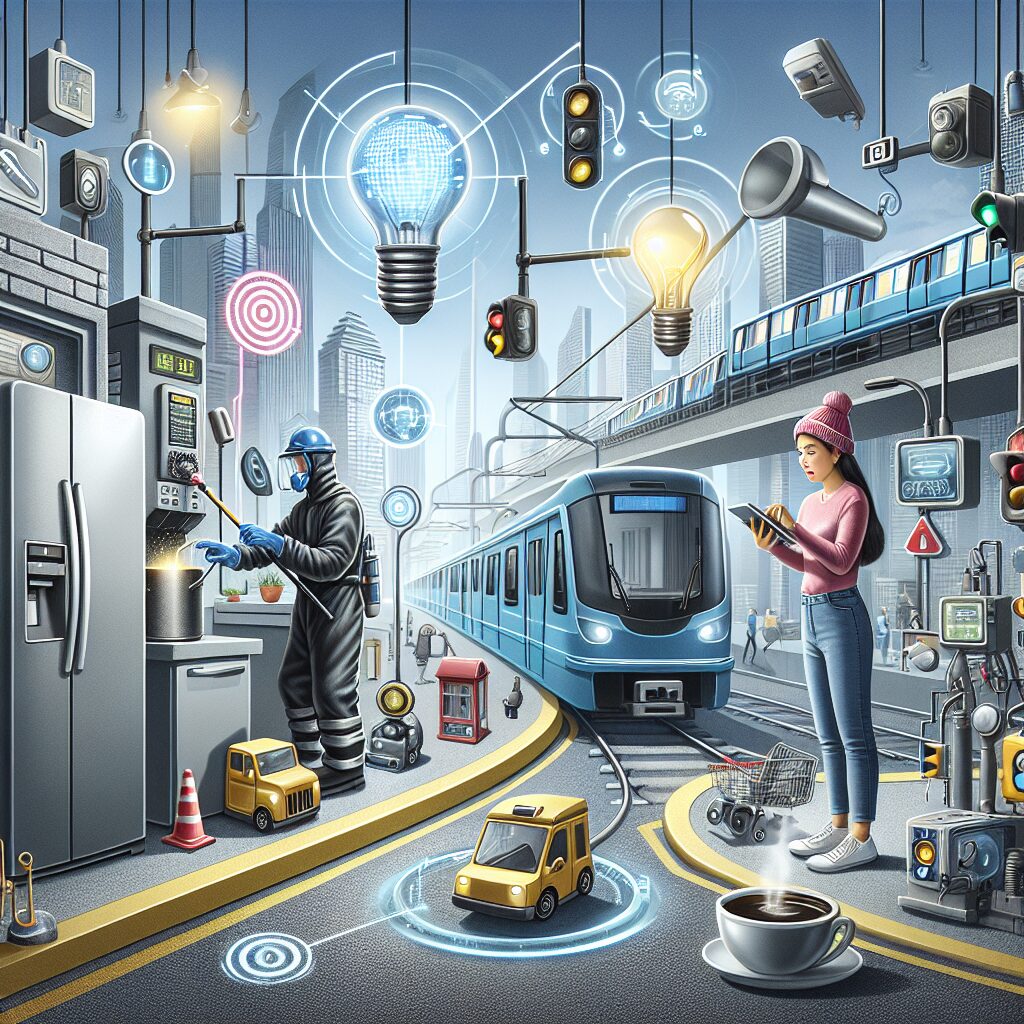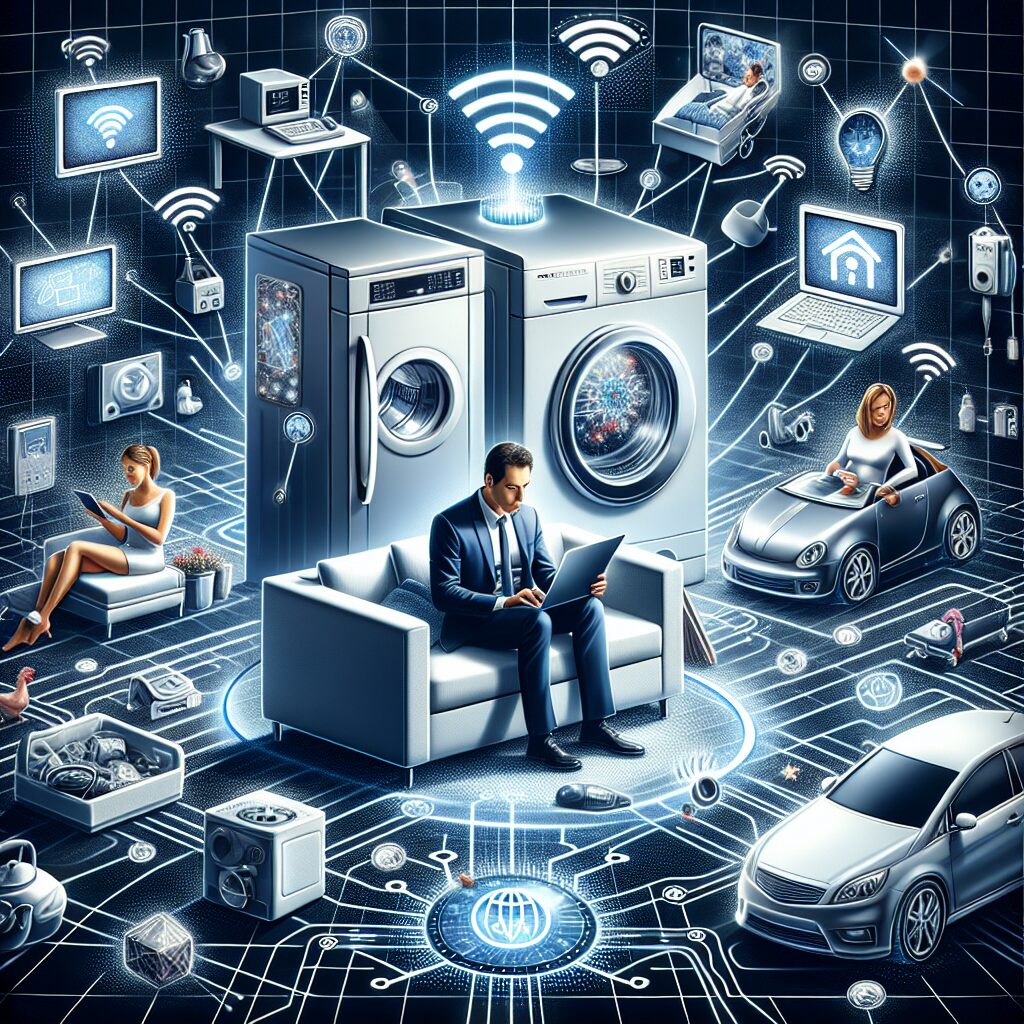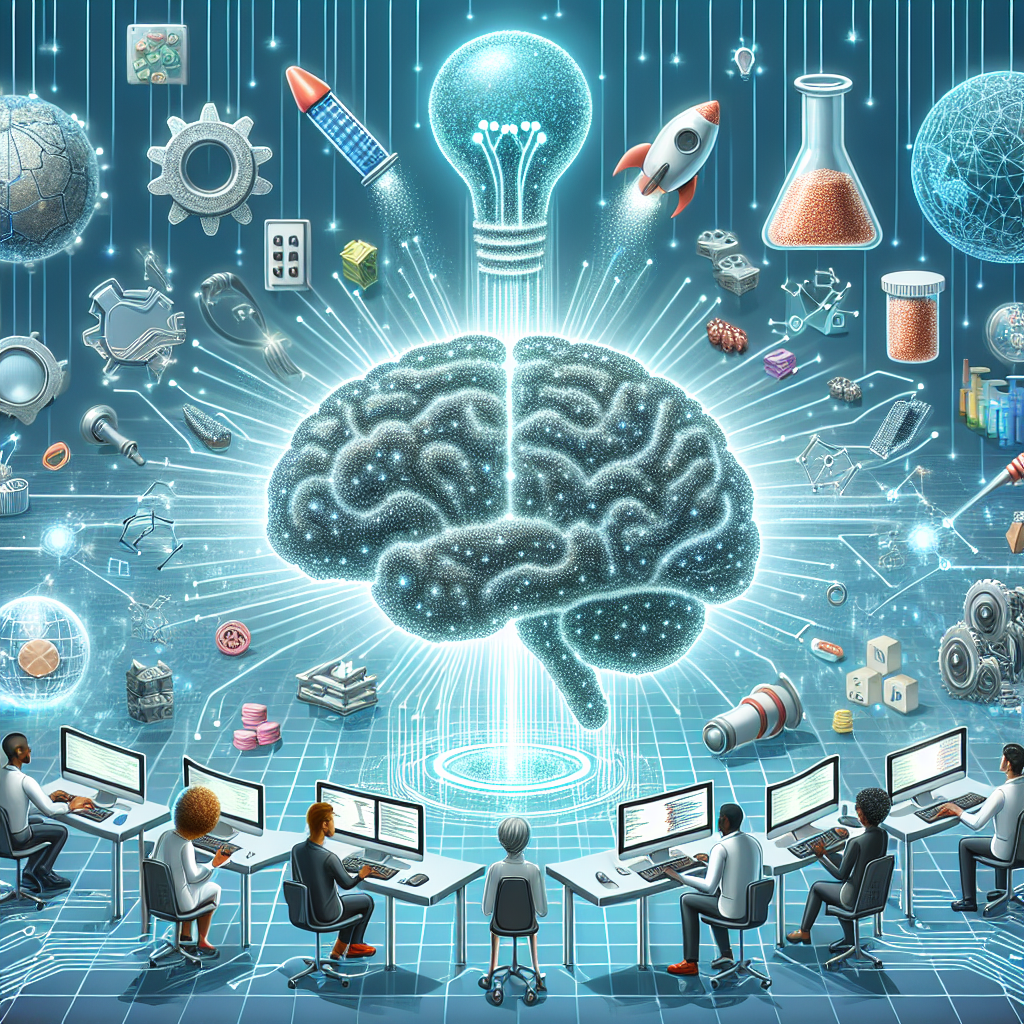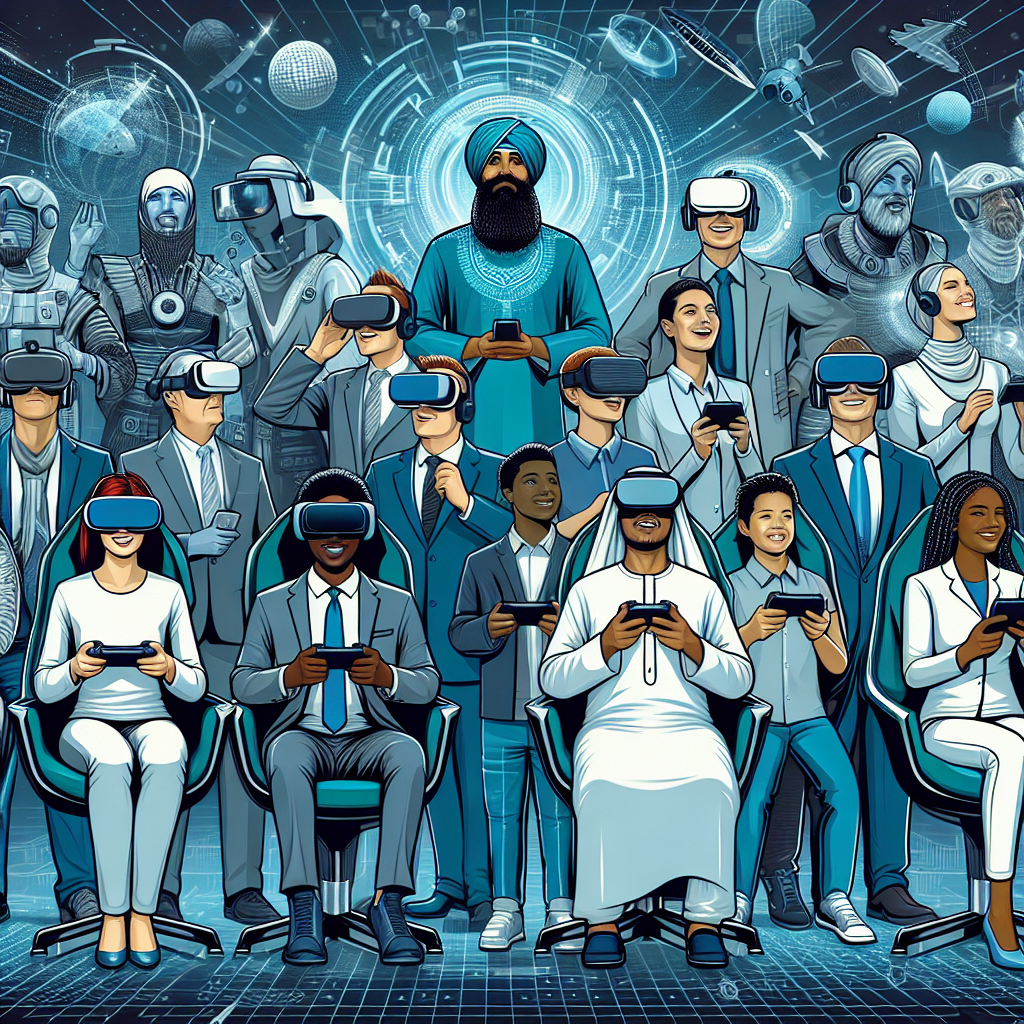
Table of Contents
- The Impact of IoT on Smart Homes and Home Automation
- IoT in Healthcare: Revolutionizing Patient Care and Monitoring
- Enhancing Transportation and Logistics with IoT Technology
- IoT and Agriculture: Improving Efficiency and Sustainability
- IoT in Retail: Transforming the Shopping Experience
- The Future of IoT: Exploring Potential Challenges and Opportunities
The Impact of IoT on Smart Homes and Home Automation
The Internet of Things (IoT): Transforming Everyday Life in Unexpected Ways
Ah, the Internet of Things (IoT). The magical world where everything is connected, and our lives are transformed in ways we never thought possible. One area where the impact of IoT is particularly felt is in the realm of smart homes and home automation. Brace yourselves, folks, because your humble abode is about to get a whole lot smarter.
Gone are the days of manually turning on lights or adjusting the thermostat. Thanks to IoT, your home can now do all that for you. Imagine walking into a room, and the lights magically turn on. It’s like having your very own personal genie, except instead of granting wishes, it just saves you the effort of flipping a switch. How convenient!
But wait, there’s more! With IoT, your home can now anticipate your every need. It’s like having a psychic house that knows exactly what you want before you even know it yourself. Need a cup of coffee in the morning? No problem! Your smart coffee maker will have it ready and waiting for you, just the way you like it. It’s almost as if your home has become your personal butler, catering to your every whim. How luxurious!
And let’s not forget about security. With IoT, your home can now protect itself from intruders. No need for pesky alarm systems or locks. Your smart home will detect any suspicious activity and take matters into its own hands. Picture this: a burglar tries to break in, and suddenly, the doors lock themselves, the lights start flashing, and a robotic voice announces, “Intruder alert! Intruder alert!” It’s like having your very own superhero home, fighting crime one break-in at a time. How thrilling!
But wait, there’s more! IoT doesn’t just stop at the front door. It extends its reach to every corner of your home, including your appliances. Your refrigerator can now order groceries for you, because who has time for mundane tasks like grocery shopping? Your washing machine can send you a text message when your laundry is done, because apparently, we can’t even be bothered to walk to the laundry room anymore. It’s like living in a world where everything is automated, and we’re just mere spectators. How exciting!
Of course, with all this convenience and automation, there are bound to be a few hiccups along the way. Like when your smart home decides to go on strike and refuses to turn on the lights or unlock the doors. Or when your coffee maker decides to rebel and brews a cup of sludge instead of your usual morning pick-me-up. But hey, who needs reliability when you have the Internet of Things, right?
In conclusion, the impact of IoT on smart homes and home automation is truly remarkable. It’s a world where our homes become our personal servants, catering to our every need and protecting us from harm. It’s a world where even the most mundane tasks are taken care of, leaving us with nothing to do but sit back and enjoy the show. So, embrace the IoT revolution, folks, because who needs control when you can have convenience?
IoT in Healthcare: Revolutionizing Patient Care and Monitoring
The Internet of Things (IoT) has been hailed as the next big thing in technology, promising to transform everyday life in unexpected ways. From smart homes to connected cars, the possibilities seem endless. But perhaps one of the most surprising areas where IoT is making its mark is in healthcare. Yes, you heard that right – IoT is revolutionizing patient care and monitoring. Brace yourselves, folks, because the future of healthcare is here, and it’s connected!
Gone are the days when doctors had to rely on outdated methods to monitor their patients. Thanks to IoT, we now have a plethora of devices that can track everything from heart rate to sleep patterns. Who needs a stethoscope when you can have a smartwatch that tells you everything you need to know about your health? It’s like having a doctor on your wrist, except without the medical degree or years of training. But hey, who needs those when you have technology?
But wait, there’s more! IoT is not just about monitoring, it’s also about intervention. Imagine a world where your refrigerator can detect that you’ve been eating too much junk food and automatically locks itself until you’ve had your daily dose of kale. It’s like having a personal nutritionist that knows your deepest, darkest secrets. And let’s not forget about the smart pill bottles that remind you to take your medication. Because who needs a functioning memory when you have a plastic container that beeps at you?
But the real game-changer in healthcare IoT is the ability to remotely monitor patients. No longer do doctors have to physically be in the same room as their patients. With IoT, they can monitor their vitals from the comfort of their own office. It’s like playing a video game, except instead of shooting aliens, you’re monitoring someone’s heart rate. And if things go wrong, don’t worry – there’s always a nurse or a robot nearby to fix the problem. Who needs human interaction when you have machines?
Of course, with all this connectivity comes the issue of privacy. But hey, who needs privacy when you have the convenience of IoT? Sure, your personal health data might be floating around in cyberspace, but at least you don’t have to remember to bring your medical records to every doctor’s appointment. And who needs personal autonomy when you have a smart device telling you what to do? It’s like having a personal trainer that never takes a day off.
So there you have it, folks. IoT is revolutionizing patient care and monitoring in ways we never thought possible. Who needs human doctors when you have machines that can do the job? Who needs privacy when you have the convenience of connectivity? The future of healthcare is here, and it’s connected. So sit back, relax, and let the machines take care of you. After all, what could possibly go wrong?
Enhancing Transportation and Logistics with IoT Technology
The Internet of Things (IoT): Transforming Everyday Life in Unexpected Ways
Enhancing Transportation and Logistics with IoT Technology
Ah, transportation and logistics, the thrilling world of moving things from point A to point B. Who would have thought that this mundane industry could be transformed by the wonders of IoT technology? Brace yourselves, folks, because we’re about to embark on a sarcastic journey through the mind-boggling ways IoT is enhancing transportation and logistics.
Let’s start with the good old traffic congestion. We all love sitting in our cars, wasting precious hours of our lives, as we inch forward at a snail’s pace. But fear not, IoT is here to save the day! With its magical sensors and data collection capabilities, IoT promises to optimize traffic flow and reduce congestion. Because who needs the thrill of honking and cursing at fellow drivers when you can smoothly glide through the streets without a care in the world?
But wait, there’s more! IoT is also revolutionizing the way we track and monitor our precious cargo. Gone are the days of relying on human error and guesswork. Now, we have sensors that can monitor temperature, humidity, and even the tiniest vibrations. Because nothing says excitement like knowing the exact temperature of that box of frozen peas you ordered online.
And let’s not forget about the wonders of predictive maintenance. Thanks to IoT, we can now predict when a vehicle or piece of equipment is about to break down. No more unexpected breakdowns on the side of the road, folks! Now, you can plan your breakdowns in advance and make sure they happen at the most inconvenient times possible.
But wait, there’s more! IoT is also making our lives easier by automating mundane tasks. Who needs human intervention when you can have self-driving trucks and drones delivering your packages? Because nothing says convenience like having a robot drop off your latest online shopping spree right at your doorstep. Just make sure to wave goodbye to the friendly delivery person you used to chat with.
And let’s not forget about the joys of real-time tracking. With IoT, you can now track your package every step of the way. Because what’s more thrilling than watching a little dot move slowly across a map? It’s like watching paint dry, but with a touch of excitement.
But wait, there’s more! IoT is also helping us optimize fuel consumption and reduce emissions. Because who needs the thrill of a gas-guzzling, smoke-belching vehicle when you can have a perfectly efficient, environmentally friendly machine? Say goodbye to the excitement of revving engines and black smoke clouds. It’s all about being responsible and boring now.
In conclusion, IoT is truly transforming transportation and logistics in unexpected ways. From optimizing traffic flow to tracking our packages with obsessive precision, IoT is making our lives easier, more efficient, and, dare we say, a little less exciting. So, buckle up, folks, because the future of transportation and logistics is here, and it’s as thrilling as watching paint dry.
IoT and Agriculture: Improving Efficiency and Sustainability
The Internet of Things (IoT) has been hailed as the next big thing, promising to revolutionize every aspect of our lives. From smart homes to connected cars, the possibilities seem endless. But perhaps one of the most unexpected areas where IoT is making its mark is in agriculture. Yes, you heard that right – farming, the age-old profession that has been around since the dawn of civilization, is now being transformed by the wonders of technology.
Gone are the days of farmers relying on their instincts and experience to tend to their crops. Now, thanks to IoT, they can sit back and let their devices do all the work. Imagine a world where tractors drive themselves, irrigation systems turn on and off automatically, and cows wear Fitbits to monitor their health. It’s a brave new world indeed.
But let’s not get too carried away with the possibilities. After all, who needs farmers when we have machines to do the job for us? Who needs human intuition and expertise when we can rely on algorithms and sensors? Who needs the joy of working the land when we can sit in our air-conditioned offices and control everything with a few clicks?
But I digress. Let’s focus on the benefits, shall we? With IoT, farmers can now monitor their crops and livestock remotely, saving them the trouble of actually going out into the fields. They can receive real-time data on soil moisture levels, temperature, and humidity, allowing them to make informed decisions about when to water, fertilize, or harvest. And if a cow is feeling a bit under the weather, no need to worry – the farmer will receive an alert on their smartphone, telling them exactly what’s wrong and what needs to be done.
Of course, there are some skeptics who argue that relying too heavily on technology can have its downsides. They say that by disconnecting from the land and relying on machines, we are losing touch with the very essence of farming. They worry that we are becoming too dependent on technology, and that if something were to go wrong – a power outage, a software glitch – we would be left helpless.
But let’s not dwell on the negatives. After all, what could possibly go wrong? It’s not like technology is ever prone to failure, right? And even if it does, we can always blame it on human error or some other convenient excuse.
In conclusion, IoT is transforming agriculture in ways we never thought possible. It’s making farming more efficient, more sustainable, and more connected than ever before. Who needs the wisdom of generations when we have algorithms and sensors? Who needs the satisfaction of hard work when we can sit back and let machines do it for us? The future of farming is here, and it’s automated, remote-controlled, and oh-so-convenient. So let’s embrace the wonders of IoT and say goodbye to the old-fashioned ways. After all, progress is always a good thing, right?
IoT in Retail: Transforming the Shopping Experience
The Internet of Things (IoT) has infiltrated every aspect of our lives, from our homes to our workplaces. But perhaps one of the most unexpected areas where IoT has made its mark is in the world of retail. Yes, that’s right, the shopping experience has been transformed by this revolutionary technology. And let me tell you, it’s been a real game-changer.
Gone are the days of wandering aimlessly through crowded stores, desperately searching for that one item you need. Thanks to IoT, shopping has become a whole new adventure. Picture this: you walk into a store, and before you even have a chance to say “hello,” a swarm of smart shopping carts surround you, ready to assist you on your retail journey. These carts, equipped with sensors and cameras, can analyze your facial expressions and body language to determine your shopping preferences. It’s like having a personal shopper, but without the pesky human interaction.
But that’s not all. IoT has taken the concept of personalized shopping to a whole new level. As you make your way through the store, smart shelves detect your presence and display targeted advertisements based on your previous purchases and online browsing history. It’s like the store knows you better than you know yourself. Who needs privacy when you can have a store that knows your deepest desires?
And let’s not forget about the dressing rooms. IoT has revolutionized the way we try on clothes. Gone are the days of awkwardly undressing in front of a mirror. Now, smart mirrors equipped with cameras and sensors can analyze your body shape and suggest the perfect outfit for you. It’s like having your own personal fashion consultant, minus the judgmental stares.
But wait, there’s more! IoT has even found its way into the checkout process. No longer do you have to wait in long lines or deal with pesky cashiers. Smart payment systems allow you to simply walk out of the store, and the items you’ve selected will be automatically charged to your account. It’s like magic, but with a hefty price tag.
Of course, with all this convenience comes a few minor inconveniences. For example, if you happen to forget your smartphone at home, you might find yourself locked out of the store. After all, who needs keys when you can have a smartphone that controls every aspect of your life? And let’s not forget about the occasional glitch in the system that causes your shopping cart to go haywire and crash into innocent bystanders. But hey, no technology is perfect, right?
All in all, IoT has truly transformed the shopping experience. From smart shopping carts to personalized advertisements, it’s like stepping into a futuristic world where everything is tailored to your every whim. So the next time you find yourself in a store surrounded by smart devices, just remember to embrace the convenience and ignore the slight invasion of privacy. After all, who needs personal space when you can have a shopping experience that’s out of this world?
The Future of IoT: Exploring Potential Challenges and Opportunities
The Future of IoT: Exploring Potential Challenges and Opportunities
Ah, the Internet of Things (IoT). It’s the buzzword that’s been floating around for a while now, promising to revolutionize our lives in ways we never thought possible. But let’s take a moment to step back and examine the potential challenges and opportunities that lie ahead in this brave new world of interconnected devices.
First and foremost, let’s talk about security. With every device in our homes and offices connected to the internet, we’re essentially opening up a Pandora’s box of vulnerabilities. Sure, it’s great that our fridge can order groceries for us, but what happens when a hacker decides to take control and order a lifetime supply of pickles? Suddenly, we’re drowning in brine, and it’s all thanks to the wonders of IoT.
And speaking of hackers, let’s not forget about privacy. With IoT, our every move is being tracked and monitored. From the moment we wake up and turn off our smart alarm clock to the moment we go to bed and have our smart mattress analyze our sleep patterns, there’s no escaping the watchful eye of Big Brother. Who needs personal space when you can have your every move scrutinized by a network of devices?
But fear not, because along with these challenges come opportunities. Take, for example, the healthcare industry. With IoT, doctors can monitor their patients remotely, ensuring that they’re taking their medication and following their treatment plans. It’s a win-win situation. The doctors get to play Big Brother, and the patients get to feel like they’re being constantly watched. What could be better?
And let’s not forget about the convenience factor. With IoT, we can control our entire homes with a single voice command. Want to turn on the lights? Just ask your virtual assistant. Want to adjust the temperature? Just tell your smart thermostat. It’s like living in a futuristic utopia where we don’t have to lift a finger. Who needs physical exertion when we can have everything done for us?
Of course, with all this convenience comes the risk of becoming completely dependent on technology. Imagine a world where we can’t even make a cup of coffee without the help of our smart coffee maker. It’s a terrifying thought. We’ll be reduced to helpless beings, unable to perform even the simplest tasks without the aid of our beloved IoT devices. But hey, at least we’ll have more time to binge-watch our favorite shows, right?
In conclusion, the future of IoT is a mixed bag of challenges and opportunities. From security and privacy concerns to the convenience and dependency it brings, there’s no denying that IoT is transforming everyday life in unexpected ways. So, let’s embrace this brave new world with open arms and hope that our smart devices don’t turn against us. After all, what’s life without a little bit of excitement and the constant threat of a pickle invasion?


